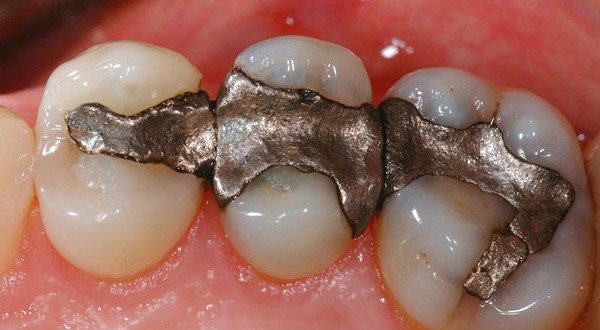 Share on Facebook
Share on Facebook
 By Amanda Just and John Kall, DMD of the International Academy of Oral Medicine and Toxicology (IAOMT), re-printed by us with permission from The World Mercury Project.
By Amanda Just and John Kall, DMD of the International Academy of Oral Medicine and Toxicology (IAOMT), re-printed by us with permission from The World Mercury Project.
1. All silver-colored dental fillings, also called amalgams, contain approximately 50% mercury, and dental mercury is still being used in the USA
In 2013, the United Nations Environment Programme (UNEP) formalized a global convention to reduce mercury usage, which includes initiatives to phase down the use of dental mercury. The UNEP mercury convention will come into force on August 16, 2017, and as part of this effort, the European Union is taking action on dental mercury. A new EU mercury regulation plans to prohibit the use of amalgam for vulnerable populations (pregnant or breastfeeding women, children under 15 years old) and provide for discussion about the feasibility of ending dental amalgam use in the European Union by 2030.
Prior to the 2017 ratification of UNEP’s mercury treaty, other countries had already taken protective actions against dental mercury. For example, Norway and Sweden have banned dental amalgam, and Denmark, Estonia, Finland, Italy, the Netherlands, and Japan have reportedly limited its use to less than 5% of tooth restorations. However, mercury fillings are still used on about 45% of direct dental restorations worldwide, including in the United States.
All silver colored dental fillings, which are still being used in the USA, contain about 50% mercury.
2. Mercury vapor is released from these fillings into the human body, and this dental mercury has been linked to health risks.
Mercury vapor is continuously emitted from dental amalgam which means that people are directly exposed to the mercury in their mouths. The output of mercury vapor can be intensified by the number of fillings and other activities, such as chewing, teeth-grinding, and the consumption of hot liquids. Mercury is also known to be released during the placement, replacement, and removal of dental mercury amalgam fillings.
Scientific researchers have associated this mercury in amalgam fillings with Alzheimer’s disease, amyotrophic lateral sclerosis (Lou Gehrig’s disease), antibiotic resistance, anxiety, autism spectrum disorders, autoimmune disorders/immunodeficiency, cardiovascular problems, chronic fatigue syndrome, depression, hearing loss, infertility, kidney disease, multiple sclerosis, Parkinson’s disease, and an array of other health problems. Click here to learn more about the potential health risks of dental mercury.
3. Safety measures can reduce the amount of mercury vapor released during the removal of amalgam fillings.
Some patients require the removal of silver amalgam fillings due to device failure, while others opt for the removal of silver amalgam fillings because of cosmetic purposes (white-colored fillings match the teeth better) or because they prefer to have dental fillings that do not contain mercury. However, the process of drilling out amalgam fillings liberates quantities of mercury vapor and fine particulates that can be inhaled and absorbed through the lungs, and this is potentially harmful to patients, dentists, dental workers, and their fetuses.
The application of specific safety measures can reduce the potential negative health outcomes of mercury exposure during the amalgam removal process. It is crucial for patients to know what these safety measures are so that they can insure these practices are implemented during the removal of amalgam fillings.
These writers co-authored a chapter about the health risks of dental mercury that was published in a textbook about epigenetics from Springer in 2016.
Amanda Just, MS: Ms. Just is the Program Director of the International Academy of Oral Medicine and Toxiciology. She is also a freelance writer and dental consumer who has shared her writings about the impact of dental mercury amalgam fillings with the United Nations Environment Programme, the U.S. Department of State, the U.S. Food and Drug Administration (FDA), and various NGOs.
John Kall, DMD: Dr. Kall serves as the Chairman of the International Academy of Oral Medicine and Toxiocology’s Board of Directors. He is a member of the American Dental Association, a fellow of the Academy of General Dentistry (AGD), Past President of the KY Chapter of the AGD, a member of the Louisville Dental Society, and a member of the Kentucky Dental Association.
http://www.collective-evolution.com/2017/06/20/three-facts-you-need-to-know-about-dental-mercury/




